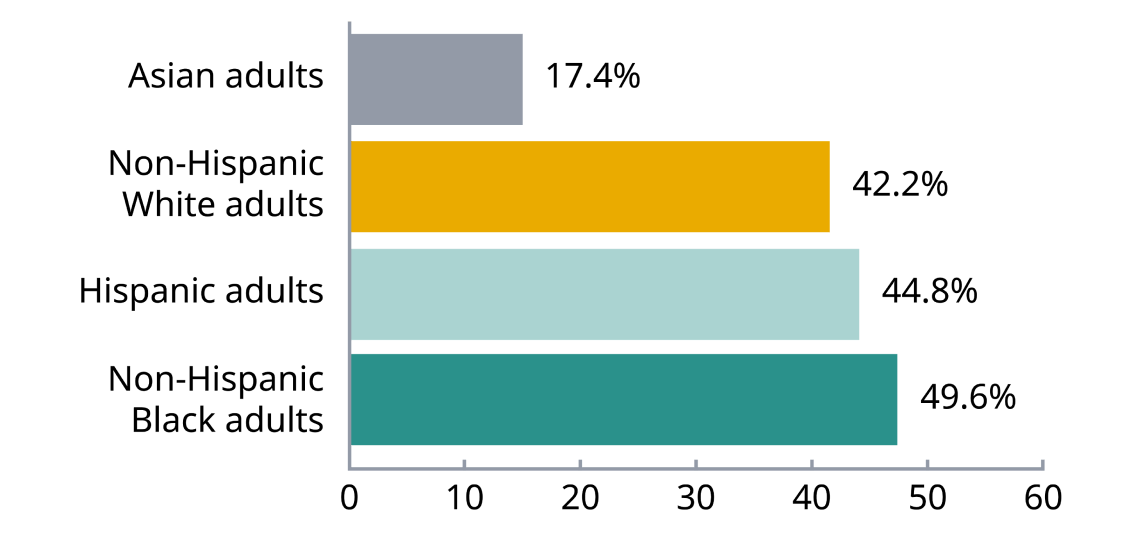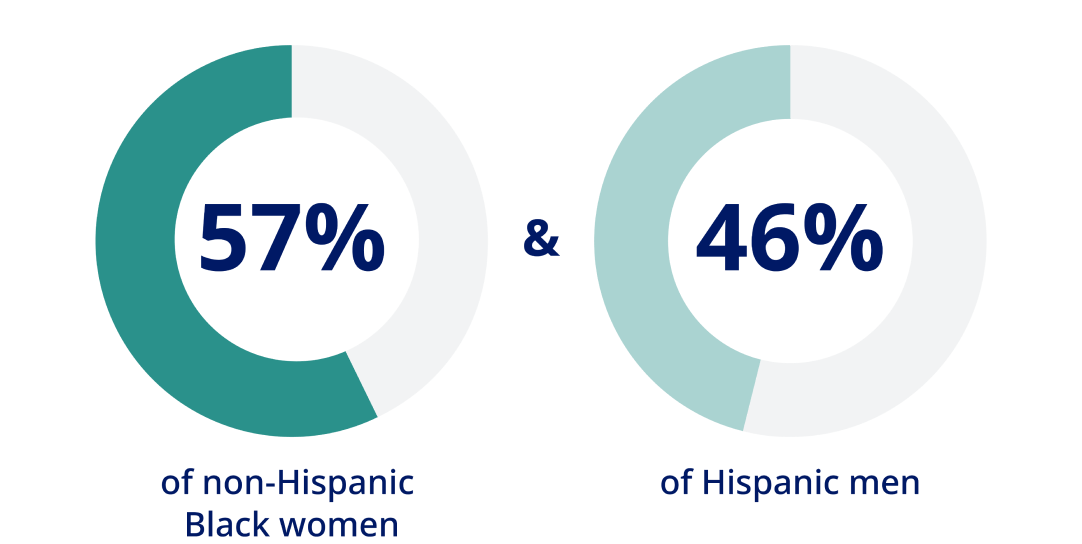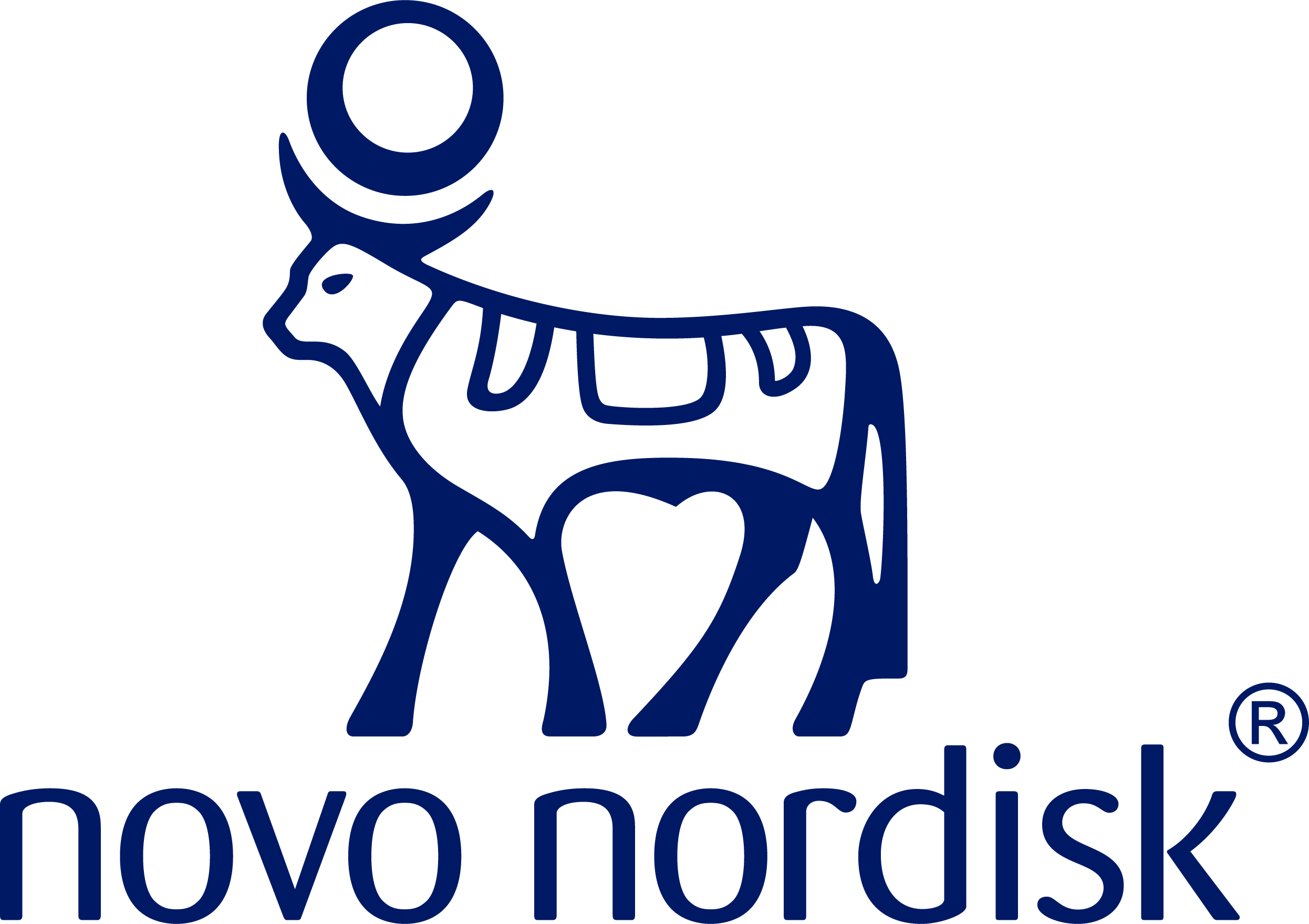Consider the impact of culture on obesity
Understanding your patients’ cultural nuances can help you create a plan that fits their lifestyles.
Understand the impact that race and ethnicity can have on obesity rates
Nearly 43% of the total US adult population has obesity. However, the prevalence of obesity for some minority populations is even higher.1
Hispanic and non-Hispanic Black adults have the highest rates of overweight or obesity1

Age-adjusted prevalence of obesity among adults aged 20 years and over, US, 2017-2018.1

have obesity compared with 42% of non-Hispanic White adults1
Age-adjusted percentage of people 20 years of age and older who had overweight or obesity, 2017-2018 (body mass index [BMI] of 30 kg/m2 or greater).1

In 31 states, the prevalence of obesity among non-Hispanic Black adults is 35% or higher. In only 1 state is the prevalence of obesity among non-Hispanic White adults that high.2
The influence of culture
Understanding your patients’ cultures is important. It may help you to better connect with them and create a weight-management plan that your patients can adhere to. Below are examples of some cultural factors you may want to consider when having a discussion with your patients about their weight-management plan and goals.

Food
Food culture comprises the attitudes, beliefs, and traditions about food and eating and can impact eating behaviors and food preferences.3

Body image
Feelings about body image can vary from culture to culture. Gender and race may have a role in body image and dissatisfaction.4

Gender and food preferences
Hispanic/Latino men may be conditioned to eat more meat and fats, whereas Hispanic/Latina women may be more likely to eat more fruits and vegetables based on patterns established by previous generations.5

DIAGNOSING OBESITY
Start the conversation on weight management
Considering these cultural factors when discussing weight-management goals with your patients will help you have an open and honest conversation.

DIAGNOSING OBESITY
Diagnosis is an important step in managing obesity6

DISEASE PROGRESSION
Obesity is influenced by a range of factors7,8
References:
1. Hales CM, Carroll MD, Fryar CD, Ogden CL. Prevalence of obesity and severe obesity among adults: United States, 2017-2018. NCHS Data Brief. 2020;(360):1-8.
2. Petersen R, Pan L, Blanck HM. Racial and ethnic disparities in adult obesity in the United States: CDC’s tracking to inform state and local action. Prev Chronic Dis. 2019;16:e46.
3. Dao MC, Thiron S, Messer E, et al. Cultural influences on the regulation of energy intake and obesity: a qualitative study comparing food customs and attitudes to eating in adults from France and the United States. Nutrients. 2021;13:1-16.
4. Chithambo TP, Huey SJ. Black/White differences in perceived weight and attractiveness among overweight women. J Obes. 2013;2013:320326.
5. Overcash F, Reicks M. Diet quality and eating practices among Hispanic/Latino men and women: NHANES 2011-2016. Int J Environ Res Pub Health. 2021;18(3):1302.
6. Ciemins EL, Joshi V, Cuddeback JK, Kushner RF, Horn DB, Garvey WT. Diagnosing obesity as a first step to weight loss: an observational study. Obesity (Silver Spring). 2020;28(12):2305-2309.
7. Lee A, Cardel M, Donahoo WT. Social and environmental factors influencing obesity. Updated October 12, 2019. In: Feingold KR, Anawalt B, Blackman MR, et al., editors. Endotext [Internet). South Dartmouth (MA): MDText.com, Inc.; 2000. https://www.ncbi.nlm.nih.gov/books/NBK278977/
8. Thaker VV. Genetic and epigenetic causes of obesity. Adolesc Med State Art Rev. 2017;28(2):379-405.


